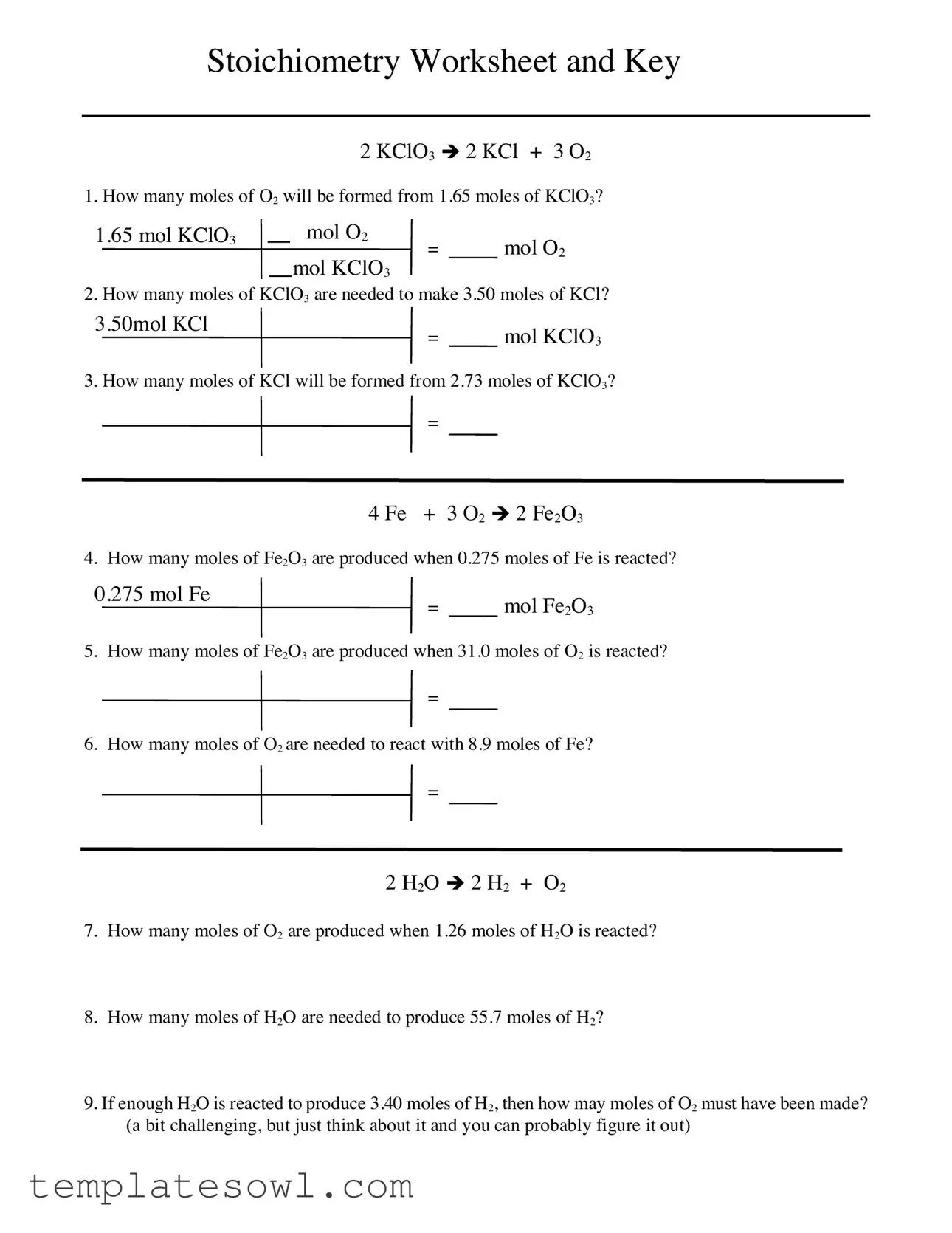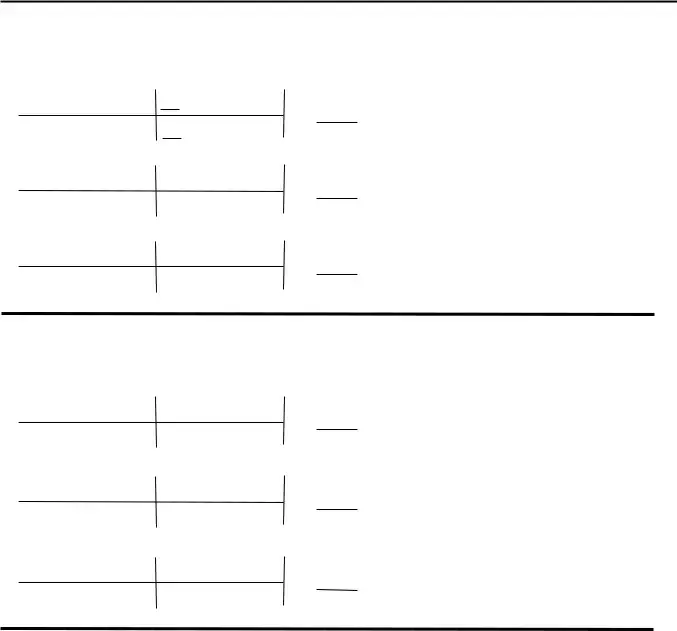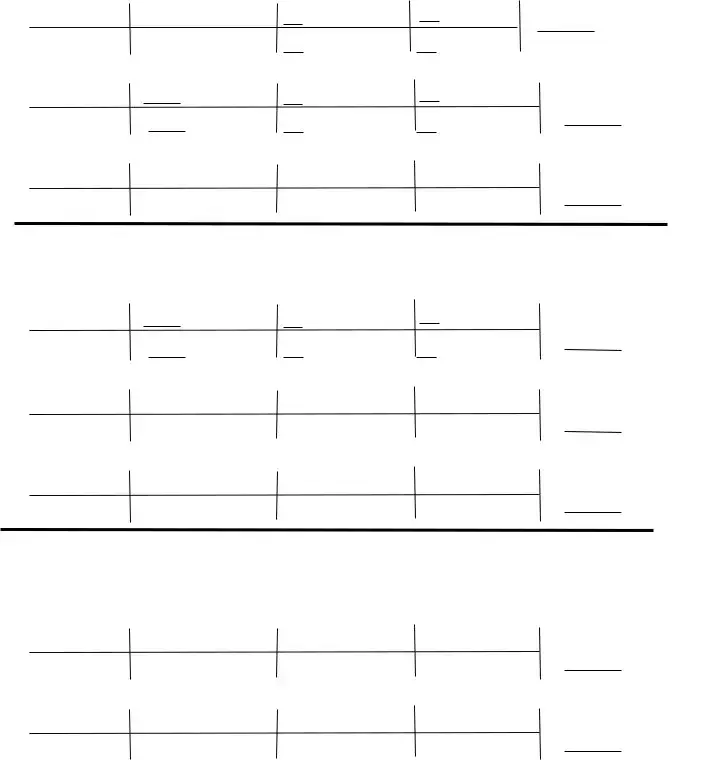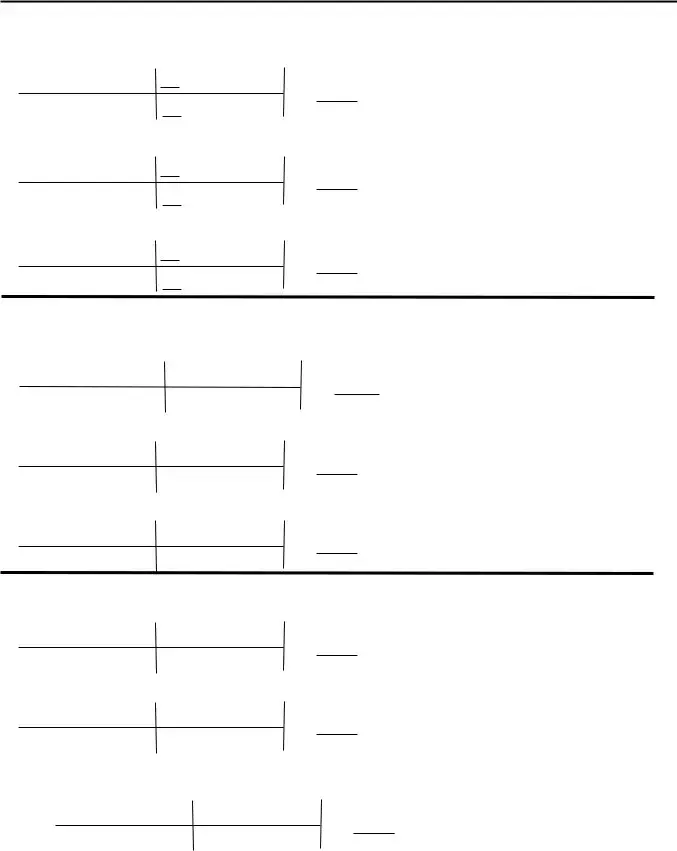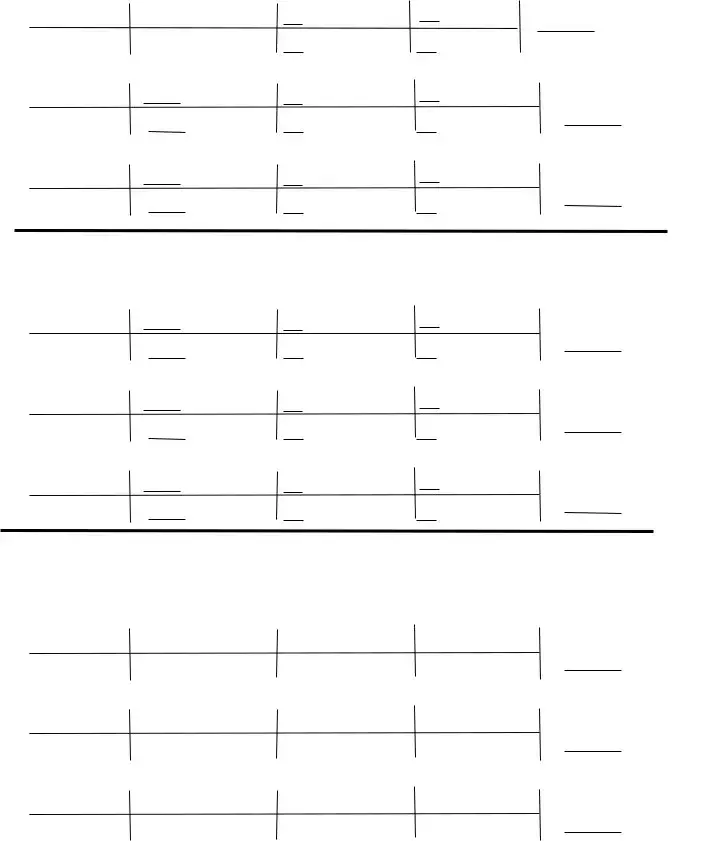What is the purpose of the Stoichiometry Worksheet?
The Stoichiometry Worksheet is designed to help students practice calculations involving chemical reactions. It provides a structured approach to understanding how reactants and products relate to one another based on the balanced equations. By working through the problems, learners can build their skills in converting between moles, grams, and understanding reaction yields.
How do I determine the number of moles of a product from a given number of moles of a reactant?
To find out how many moles of a product are produced from a certain amount of a reactant, use the coefficients from the balanced chemical equation. For example, if the equation shows that 2 moles of the reactant yield 3 moles of product, you can set up a proportion. Multiply the number of moles of the reactant by the ratio of the product's coefficient to the reactant's coefficient.
Are the calculations based on real chemical reactions?
Yes, the calculations included in the worksheet are based on actual chemical equations. These represent common reactions, such as the decomposition of potassium chlorate (KClO3) and the combustion of butane. Understanding these reactions can provide insight into practical applications in chemistry and everyday life.
Can I complete the worksheet without prior knowledge of stoichiometry?
While prior knowledge of stoichiometry is helpful, the worksheet is designed to guide students through the necessary calculations step by step. By applying the concepts presented in the problems and utilizing the balanced equations, individuals can learn and complete the exercises effectively.
What do I do if I encounter a difficult question?
If you come across a challenging question, take a moment to break it down. Identify what you know and what you need to find. Reviewing the related chemical equation and considering similar examples may also provide clarity. Don't hesitate to reach out to a teacher or peer for assistance if you're still struggling.
What tools or materials should I have when completing this worksheet?
A calculator is essential for performing mathematical computations. It’s also helpful to have periodic tables available to reference molar masses. A notebook for rough work may assist you as you calculate and re-check your values.
How can I check my answers once I've completed the worksheet?
The worksheet often includes an answer key that provides the correct solutions for each question. Cross-referencing your results will help confirm your calculations are accurate. If any answers differ, reviewing your steps can help identify where a mistake may have occurred.
Is there a limit to how many times I can practice this worksheet?
No, there is no limit to how often you can use the Stoichiometry Worksheet. Repetition can enhance understanding, so feel free to retry the problems to reinforce your learning. Each attempt offers an opportunity to improve your skills and gain confidence.
What concepts should I understand before attempting the worksheet?
Before tackling this worksheet, it's beneficial to have a basic understanding of moles, molar mass, and the concept of balanced chemical equations. Familiarity with converting between grams and moles and using ratios from the equations will greatly aid in solving the problems presented.
